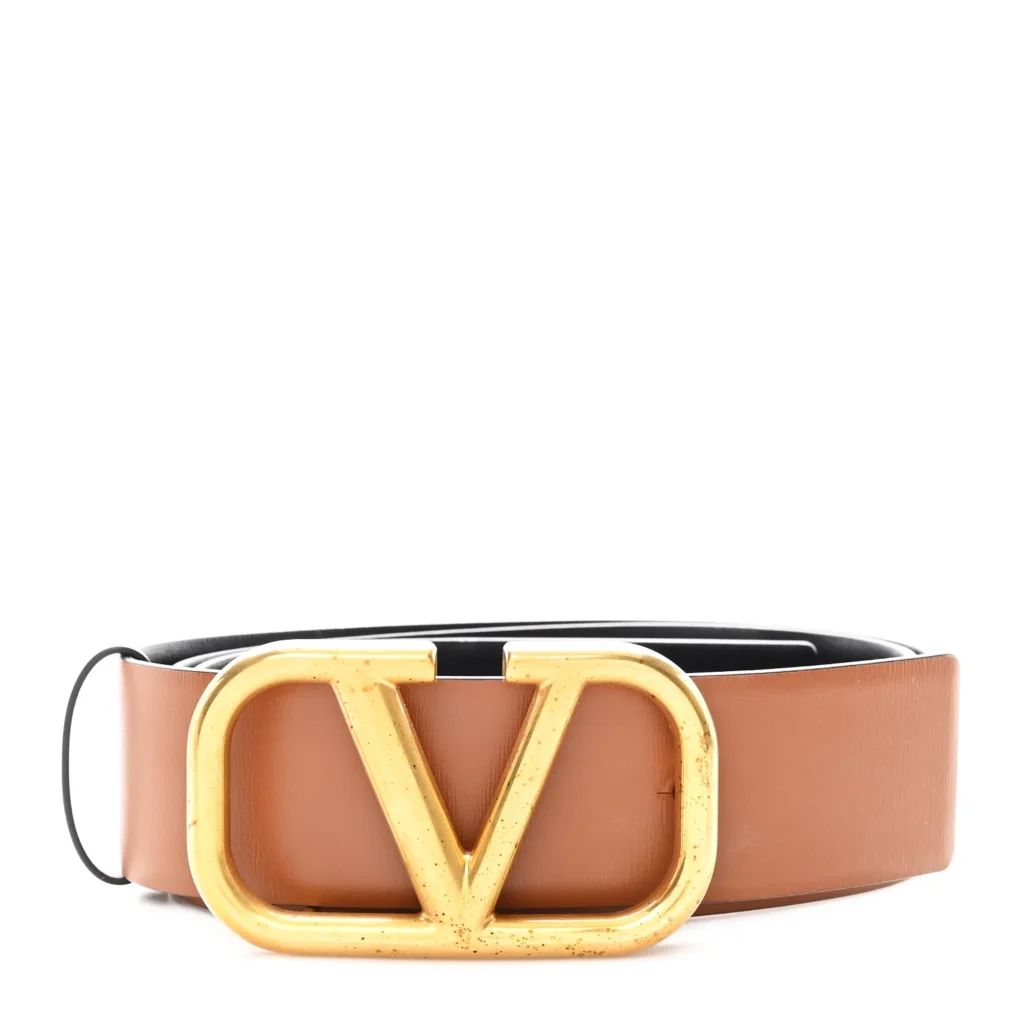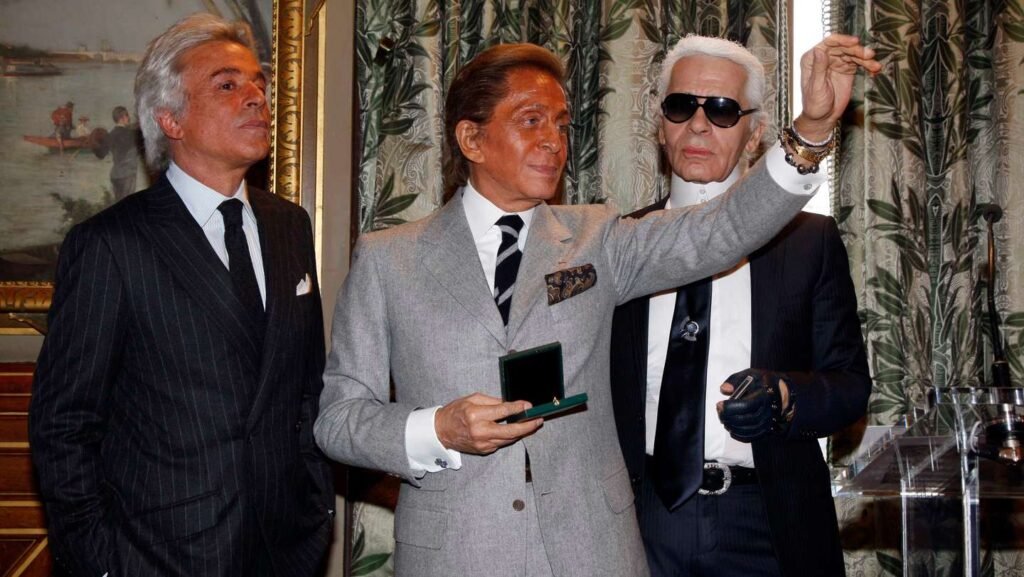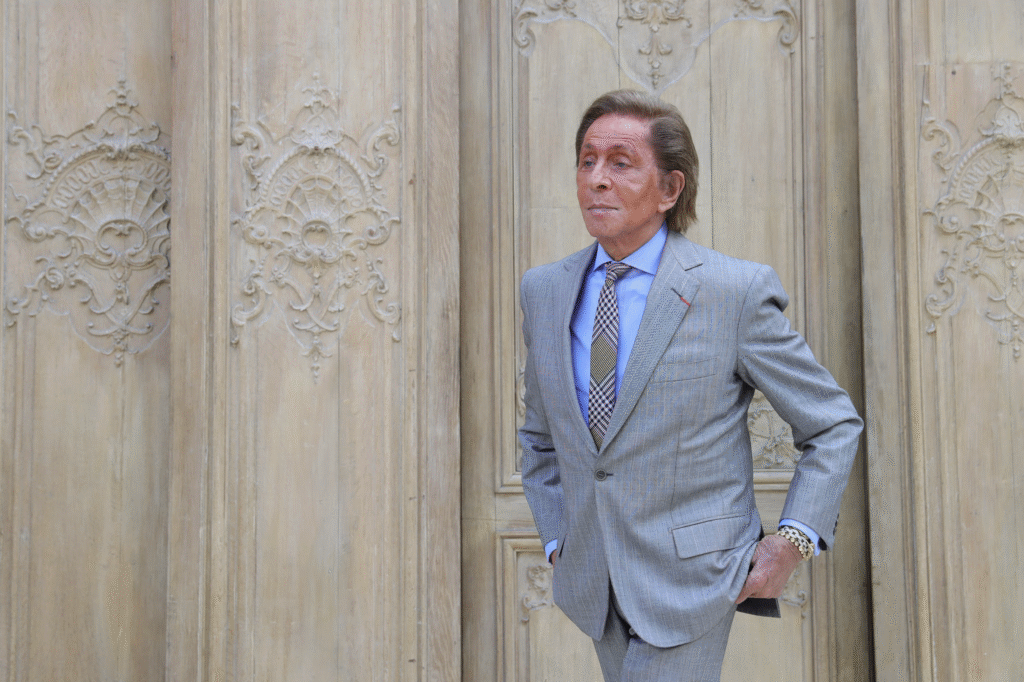When Julia Roberts ascended the stage to accept her Oscar in 2001, her black and white velvet gown wasn’t just a dress; it was a moment. That vintage Valentino creation instantly became one of the most iconic red-carpet looks of all time, a testament to a fashion house synonymous with timeless elegance and breathtaking beauty. But the story of Valentino is far more than a highlight reel of famous dresses. Most histories are fragmented, focusing solely on the creative genius of the founder, Valentino Garavani. They miss the other half of the equation—the business mastermind who turned artistic vision into a global empire. This is the definitive, dual-lens history of Valentino.
We unite the unparalleled creative talent of Valentino Garavani with the strategic brilliance of his lifelong partner, Giancarlo Giammetti, to tell the complete, untold story of how a legendary fashion house was built. From a near-bankrupt start-up in Rome to a billion-dollar global powerhouse, you will discover the key milestones, the stories behind the iconic designs, and the evolution of an empire that continues to define luxury today.
The Founder’s Story: The Dual Vision Behind the Valentino Brand
To understand the Valentino brand origin, you must understand that it was never a solo act. The house was built on a foundation of two complementary forces: the artistic soul of Valentino Garavani and the business acumen of Giancarlo Giammetti. This symbiotic partnership is the true Valentino founder story, a narrative of shared ambition that saved the brand from an early demise and propelled it to legendary status.
Valentino Garavani: The Creative Genius’s Parisian Apprenticeship
Born in Voghera, Italy, in 1932, Valentino Garavani’s passion for fashion was evident from a young age. He moved to Paris as a teenager to pursue his dream, formally studying at the prestigious École des Beaux-Arts and the Chambre Syndicale de la Couture Parisienne. This rigorous education provided the technical foundation for his talent. He then honed his craft through formative apprenticeships at the couture houses of Jean Dessès and Guy Laroche, absorbing the principles of French elegance and meticulous craftsmanship that would later define his own aesthetic. By the time he returned to Rome to open his own fashion house on the glamorous Via Condotti in 1959, he was armed with an unparalleled pedigree and a clear vision for creating beauty.

Giancarlo Giammetti: The Architectural Mind Who Built an Empire
Valentino Garavani’s creative vision was undeniable, but in its first year, his business was on the brink of collapse. The story of Valentino could have ended there, but a chance meeting on July 31, 1960, changed everything. Garavani met Giancarlo Giammetti, then an architecture student, who quickly recognized both the designer’s immense talent and the company’s dire financial state. In a pivotal decision, Giammetti abandoned his studies to take over the commercial side of the business. As fashion historian Saxony Dudbridge notes, Giammetti became Valentino’s “indispensable business collaborator”[1]. He was the pragmatic architect who built the structure that allowed Garavani’s creativity to flourish. Their lifelong partnership, beautifully captured in the 2008 documentary Valentino: The Last Emperor, was the engine of the brand, a perfect fusion of art and commerce that would conquer the world.
A Timeline of an Icon: Key Milestones in Valentino’s History
From a small Roman atelier to a global luxury powerhouse, the history of Valentino is marked by creative triumphs, strategic business moves, and ever-expanding influence. Here are the key milestones that chart the brand’s remarkable journey.
- 1959: Valentino Garavani opens his first fashion house on Rome’s Via Condotti.
- 1960: The Valentino company is officially founded after Giancarlo Giammetti joins as Garavani’s business partner, saving the brand from bankruptcy.
- 1962: The brand makes its international debut at the Pitti Palace in Florence. The show is a resounding success, establishing Valentino as a rising star of Italian couture.
- 1967: Valentino debuts his famous all-white collection, a bold counterpoint to the psychedelic trends of the era. This collection also introduces the iconic “V” logo.
- 1968: Jacqueline Kennedy wears a Valentino dress for her wedding to Aristotle Onassis, catapulting the brand to international fame.
- 1998: Garavani and Giammetti sell the company for approximately US$300 million to the Italian conglomerate Holding di Partecipaziono Industriali (HdP)[1].
- 2002: HdP sells Valentino to the Marzotto textile group, another major Italian fashion player[1].
- 2008: Valentino Garavani presents his final haute couture collection in Paris and retires from the brand he created. Maria Grazia Chiuri and Pierpaolo Piccioli are appointed co-creative directors.
- 2012: The brand enters a new era of growth when it is acquired by Mayhoola for Investments, an investment vehicle backed by the Qatari royal family, for a reported 700 million euros[2].
- 2015: Under new ownership and creative direction, the business reaches a major financial milestone, achieving revenues of $1 billion[3].
- 2016: Maria Grazia Chiuri departs for Dior, and Pierpaolo Piccioli becomes the sole creative director of the house.
- 2024: After a celebrated tenure, Pierpaolo Piccioli steps down. Former Gucci creative director Alessandro Michele is appointed to lead the next chapter of Valentino’s history.

Decoding the Icons: The Stories Behind Valentino’s Signatures
More than just a name, Valentino is a language of beauty spoken through its iconic signatures. These elements are the brand’s DNA, each with a rich story that reveals the depth of its heritage and its enduring appeal.
The Legend of Valentino Red: An Opera Epiphany
There is red, and then there is Valentino Red. This specific, vibrant shade is the brand’s most powerful and enduring signature. Its origin lies not in a design studio, but in a moment of inspiration during Garavani’s youth. As fashion journalist Sara Delgado recounts for L’Officiel, the designer was at an opera in Barcelona when he was captivated by the women in the theatre boxes, all dressed in brilliant red gowns[4]. “I think a woman dressed in red is always magnificent,” he later recalled. That memory became his trademark. Far from a simple primary color, Valentino Red is a precise, complex hue. Its formula is a mix of 100% magenta, 100% yellow, and 10% black, resulting in a shade that is both fiery and deeply elegant[4]. The legacy of this color is so profound that it was celebrated in the 2022 Assouline book, Valentino Rosso, which documents its use across the house’s history.
The 1967 ‘White Collection’ and the Birth of the ‘V’ Logo
While red is his most famous color, Valentino also made history with its absence. In 1967, at the height of the psychedelic era’s explosion of pattern and color, he presented an entire collection in shades of white, cream, and beige. This “no colour” collection was a masterstroke of minimalist chic and introduced the world to another house icon: the geometric “V” logo, which adorned belts and hardware. The collection’s refined elegance caught the eye of the world’s most famous style icon, Jacqueline Kennedy. She became a devoted client, and her decision to wear a pale lace Valentino minidress for her 1968 wedding to Aristotle Onassis cemented the brand’s status as the epitome of sophisticated glamour.

The Rockstud Revolution: A Modern Phenomenon
When Maria Grazia Chiuri and Pierpaolo Piccioli took the helm, they faced the challenge of making the storied house relevant for a new generation. Their answer came in the form of a small, pyramid-shaped stud. Launched in 2010, the Rockstud line of shoes and accessories was an instant phenomenon. It perfectly blended the brand’s inherent elegance with a touch of modern, edgy attitude. The Rockstud became a commercial juggernaut, a symbol of the brand’s successful rebirth. The line’s incredible financial impact is a testament to its success; sales of Rockstud shoes alone generated over $152 million between 2014 and 2019[3].
The Evolution of an Empire: Leadership After Garavani
When a founder as iconic as Valentino Garavani retires, the future of the house hangs in the balance. Yet, Valentino has not only survived but thrived by reinterpreting its core DNA through the vision of new creative leaders.
The Modern Renaissance (2008-2016): Maria Grazia Chiuri & Pierpaolo Piccioli
Following Garavani’s retirement in 2008, the creative reins were passed to the long-serving accessory design duo Maria Grazia Chiuri and Pierpaolo Piccioli. Together, they orchestrated a modern renaissance for the brand. They softened the house’s formal aesthetic, introducing a more delicate, romantic, and youthful sensibility while maintaining its couture-level craftsmanship. Their tenure was defined by the wildly successful Rockstud line, which re-energized the brand’s accessory business and introduced Valentino to a new, younger global audience.

The Piccioli Vision (2016-2024): A New Romanticism and the ‘Pink PP’ Era
In 2016, Pierpaolo Piccioli became the sole creative director, ushering in a critically acclaimed era. His vision was one of inclusive beauty, vibrant color, and breathtaking volume. He brought the dream of haute couture to ready-to-wear, creating collections that were both deeply emotional and exquisitely crafted. His Fall/Winter 2022 collection, rendered almost entirely in a shocking, monochromatic fuchsia dubbed “Pink PP,” became a viral cultural moment, demonstrating his mastery of modern branding and his ability to create fashion that resonates far beyond the runway.
The Next Chapter (2024-Present): Alessandro Michele Takes the Helm
In March 2024, the fashion world was electrified by the announcement that Alessandro Michele, the visionary designer who transformed Gucci, would become Valentino’s new creative director. This appointment signals a bold new chapter for the Roman house. The industry waits with bated breath to see how Michele’s eclectic, maximalist, and narrative-driven approach will merge with the timeless elegance and couture heritage of Valentino.
Valentino in the UAE: Your Guide to the Brand in Dubai & Abu Dhabi
For fashion connoisseurs in the UAE, Valentino’s presence is a cornerstone of the luxury landscape. The brand’s boutiques in Dubai and Abu Dhabi offer an immersive experience into the world of Italian craftsmanship and high fashion. Whether you are seeking a show-stopping gown, the latest Rockstud accessories, or an iconic VLogo bag, you can find the latest collections at the official Valentino stores.
Key locations include:
- The Dubai Mall, Fashion Avenue: Dubai
- Mall of the Emirates, Fashion Dome: Dubai
- The Galleria Al Maryah Island: Abu Dhabi
These boutiques often carry exclusive pieces and offer the impeccable service that is synonymous with the Valentino name, making them essential destinations for luxury shopping in the region.

A Legacy of Beauty, A Future of Possibility
The history of Valentino is not just the story of one man, but of a perfect partnership that fused creative genius with business acumen. It is a journey that began in Rome with a passion for red dresses and grew into a global symbol of Italian luxury. From Valentino Garavani’s timeless elegance and Giancarlo Giammetti’s strategic vision to the modern romanticism of Pierpaolo Piccioli, the house has consistently evolved while remaining true to its core identity: the relentless pursuit of beauty.
As the brand embarks on its next chapter under the leadership of Alessandro Michele, its legacy serves as a powerful foundation. It remains a testament to the idea that true style is enduring, that craftsmanship is paramount, and that a woman in the right dress—especially if it’s Valentino Red—is always magnificent.
Explore the latest Valentino collections at their official boutiques in The Dubai Mall and Mall of the Emirates. What is your favorite era of Valentino’s history? Share your thoughts in the comments below!
References
- Dudbridge, S. (n.d.). Valentino Biography. Catwalk Yourself. https://www.catwalkyourself.com/fashion-biographies/valentino/
- Reuters Staff. (2012, July 12). Qatari royals buy Valentino for about 700 million euros. Reuters. https://www.reuters.com/article/us-valentino-qatar/qatari-royals-buy-valentino-for-about-700-million-euros-idUSBRE86B0G820120712/
- Glam Observer. (n.d.). The History And Evolution Of Valentino. https://glamobserver.com/the-history-and-evolution-of-valentino/
- Delgado, S. (n.d.). A Brief History of Valentino Red. L’Officiel USA. https://www.lofficielusa.com/fashion/valentino-red-history-valentino-garavani



